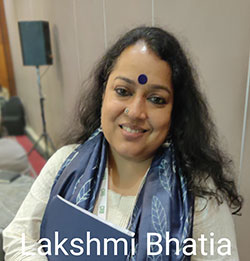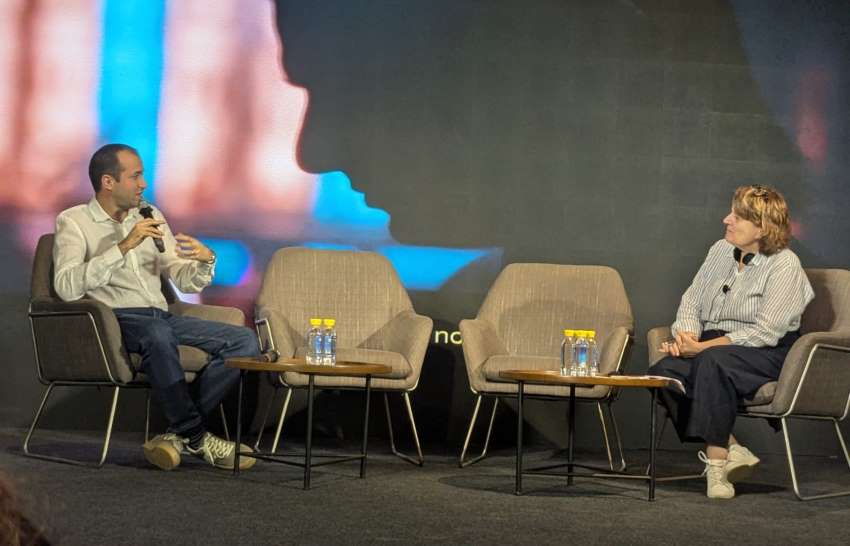FW
American retailer Guess has joined the Ellen MacArthur Foundation’s Make Fashion Circular initiative, an initiative to redesign the future of fashion. Guess has committed to develop denim according to the initiative’s Jeans Redesign guidelines, which tackle the issues of waste and pollution associated with denim production. The guidelines establish minimum requirements for durability, material health, recyclability, and traceability.
Guess has been synonymous with denim culture throughout its history - and by joining the Jeans Redesign it is helping to shape the industry’s future. The aim is to create jeans that last longer, that can be remade into new jeans at the end of their use, and are made in ways which are better for the environment and the people that make them. The Ellen MacArthur Foundation leads the way in rethinking fashion design, and Guess is part of this transformation. The Jeans Redesign program challenges brands to revisit how they make denim. Guess aims at producing more environmentally sustainable products and this partnership with Ellen MacArthur is another step towards the brand’s quest to make the world a better place. Guess has been promoting sustainability and fashion circularity, the idea that clothing should be continuously reused, reworn, and recycled.
"Visitors from international countries like Canada, Dubai, Germany, Italy, Turkey, UAE, UK and USA gave the show a global feature. The fair marked a 17% increase in exhibition space, growing by 23% in terms of exhibitors and 25% growth in international exhibitors compared to the previous edition"
 The 7th edition of Techtextil India, 2019 curated a gamut of technical textile solutions from across 13 continents including India. The event attracted a swarm of 4,446 quality visitors from numerous major cities like Ahmedabad, Bengaluru, Chennai, Hyderabad, Kolkata, Pune, Raigarh, and Mumbai. It witnessed a strong participation of 192 exhibitors from major countries across the world
The 7th edition of Techtextil India, 2019 curated a gamut of technical textile solutions from across 13 continents including India. The event attracted a swarm of 4,446 quality visitors from numerous major cities like Ahmedabad, Bengaluru, Chennai, Hyderabad, Kolkata, Pune, Raigarh, and Mumbai. It witnessed a strong participation of 192 exhibitors from major countries across the world
Visitors from international countries like Canada, Dubai, Germany, Italy, Turkey, UAE, UK and USA gave the show a global feature. The fair marked a 17% increase in exhibition space, growing by 23% in terms of exhibitors and 25% growth in international exhibitors compared to the previous edition. Smart textile machineries, recycled fibres, industrial fabrics, fire retardants, industry wearable’s, and other sustainable solutions were among some of the key highlights on the show floor.
Among the areas discussed during the B2B event, the exhibition majorly divulged into the subject of recent technical advancements, all-round growth, sustainability, and reusability of materials in technical textiles.
The event sparked a prolific converse aimed at promoting the growth of technical textiles by introducing various inventive means and methods, such as usage of lighter, stronger, and better renewable composites including technologically refined machinery in the manufacture of technical textiles.
The cotton industry received a great impetus at Farmers Conclave, as a generous yield of high-in-demand clean cotton marked a big-time success of PradarshanKhet Project. Techtextil Symposium forecasts the future of technical textiles The Symposium proved to be a spectacular juncture for valuable exchanges, between industry, experienced speakers and numerous highly-qualified professionals witnessing as an enthusiastic audience from all fronts of technical textiles.
The seminar aimed at fostering sustainability, durability and functionality through the greater use of renewable natural fibres, rather than synthetic ones. With an aim to curb pollution levels through technical textiles, a newer model of coating machinery was introduced during the seminar, a multi-operation machinery performing all 6 coating functions in a single unit, was greatly applauded as a means to conserve higher usage of energy while constraining pollution.
The Hackathon proved to be a great platform for interaction and mutual sharing of versatile experiences concerning the prevailing condition of the technical textile industry.
Sector-specific problems were discussed with the key focus on replacing industry-processed pollutive materials with bio-degradable eco-friendly composites, which was commonly appreciated in the forum as a cleaner, cheaper, and more sustainable alternative. A few ‘green’ solutions mentioned during the forum were: Nasal filters made with Nanofibers in highly-polluted cities, plantable sanitary pads, including insights on using waste plastic, as composites for recycle and re-manufacture of technical textiles.
Research Association (SASMIRA), Northern India Textile Research Association (NITRA), DKTE Society, Textile & Engineering Institute and PSGtech College of Technology (InduTech) had major perspectives to offer regarding the prevailing state and the level of development in technical textile industry.
The event largely mentioned that India’s primary goal in the field of technical textiles today must be: To start producing fibers largely on its own. Disseminating massive awareness regarding the benefits of investing in technical textiles will help augment its manufacturing and usage. Raising the level of awareness in geosynthetic materials is also required as industries continue to use conventional methods, whereas, in non-woven industries, there is a need to boost innovation and explore new applications to develop the sector.
"The growing popularity of social media platforms amongst millennials and Gen Z consumers allows challenger brands to disrupt the marketplace. As 2019 Cotton Incorporated Lifestyle Monitor Survey notes, almost one in two consumers today are less loyal to apparel brands than they were a few years ago. Around 22 percent of these consumers turn to social media sites to get an idea of the latest apparel trends"
 In a McKinsey report released earlier this year, 79 per cent industry executives revealed self-disruption to be one of the top five trends impacting apparel business. The report stated every new business wants to be the next big disruptor today. The movement is being driven by younger consumers who wish to set themselves apart from other upcoming brands and advancements in digital technology and social media.
In a McKinsey report released earlier this year, 79 per cent industry executives revealed self-disruption to be one of the top five trends impacting apparel business. The report stated every new business wants to be the next big disruptor today. The movement is being driven by younger consumers who wish to set themselves apart from other upcoming brands and advancements in digital technology and social media.
Physical stores to retain popularity even as social media grows
Emerging ventures are challenging existing businesses through their branding, communication, and distribution. The growing popularity of social media platforms amongst millennials and Gen Z consumers allows challenger brands to disrupt the marketplace. As 2019 Cotton Incorporated Lifestyle Monitor Survey notes, almost one in two consumers today are less loyal to apparel brands than they were a few years ago. Around 22 percent of these consumers turn to social media sites to get an idea of the latest apparel trends. However, only half of them actually buy these clothes.
Moreover, younger consumers still prefer to shop in physical stores rather than engaging in online retail. A survey by A.T. Kearney reveals that around 81 percent consumers aged between 14-to-24 years prefer to shop in stores, while 73 percent like to discover new products at retail locations. 
Brands like Moncler, whose new project offers monthly collaborations with guest designers have successfully self-disrupted. For its November collection, the brand collaborated with Valentino’s Pierpaolo Piccioli, Palm Angels, and Simone Rocha.
Resale to gain prominence
Another example of disruption was luxury brand Burberry, which developed a new logo and monogram under Riccardo Tisci. The brand, founded in 1856, was an early adopter of digital marketing and social media. In 2018, it collaborated with Fartech to make all its products available around the world. The British brand also created a drop collection called the B Series. The brand releases a capsule collection on the 17th of each month for just 24 hours. It recently launched a new program under which users who sell their Burberry items on the RealReal Platform receive an exclusive personal shopping experience at select US stores.
According to Walter Loeb, founder of Loeb Associates, a management consulting and advisory firm, the resale market is likely to be more disruptive to the apparel industry than anyone is expecting. The most prominent resellers will include eBay, Poshmark, Rebag, Farfetch, The RealReal, Goodwill. As the Monitor research revealed around 60 percent of Gen Z shoppers and 57 percent of Millennials purchased secondhand clothing from places like Thredup, Plato’s Closet, Poshmark.
Prior to resalers, the boxed apparel services like Stitch Fix were considered to be industry disruptors. But the acquisition and retention costs for these services are high, and the field is also very competitive with new players regularly entering the market.
Rise of the rental market
Other emerging popular options for the apparel sector include rental sites like Rent The Runway or Le Tote. As the Monitor survey reveals, around 22 percent of consumers used such sites in 2019, against 17 percent in 2018. The clothing rental market has been growing by more than 20 percent annually with brands and retailers like Bloomingdale’s, American Eagle, Banana Republic, Urban Outfitters, Vince, NY & Company, Ann Taylor, and Express entering the market. The firm GlobalData Retail estimates the rental market to reach $2.5 billion by 2023.
Europe -based denim and garment maker Genesis’ spring/summer 2021 collection incorporates eco-conscious fabrics such as organic cotton, recycled fabric and polymer. Technical fibers are also in the spotlight. Hyper blue, natural cotton colors, flat bright indigo mid shades or urban grey and reactive layers dominate the feeling of the new collection. In terms of looks and treatments the collection has developed several unique interpretations such as engineered garments, digital laser patterns, wester silhouettes, workwear, soft dyes, contemporary stripes, dirty green cast and eco-acid wash. This is a collection where technology and tradition meet.
The company has a social responsibility program. This includes services such as a digital payment to facilitate financial empowerment of workers through a dedicated transparent mobile banking service for all employees. The subsidized shop ensures authenticated and hygienic products directly from the mills at a very affordable price for all workers. Some of the other facilities include medical service and child care. Genesis aims at targeting the high fashion denim market in Europe. It has released a high-end capsule collection.
Genesis based in Europe is a denim and apparel garment manufacturer which caters to leading fashion brands in the European, US, Asian and Russian markets like Diesel, G-Star Raw, Jack & Jones, C&A, Celio, Zara, Target, VF and Gap.
Hyosung has opened its first spandex plant in India near Aurangabad in Maharashtra. The plant has an annual production capacity of 18,000 tons. Since it initiated operation in India in 2007, Hyosung built a high voltage breaker plant in Pune in 2016 and is gaining sales by expanding its business in India. The operation of the new spandex manufacturing facility is expected to further increase its sales.
The Korean conglomerate is known for its spandex brand Creora, which has about a 50 per cent market share in India. It is market demand that pushed Hyosung to start a new factory in India. Hyosung sees India as among its top five spandex markets and having sustained growth. Hyosung grows by about eight per cent a month in the Indian market, which has led to more than 50 per cent growth a year. The primary mission of the group is to support the growth of Indian and southeast Asian textile manufacturers through new products, exceptional service and trend presentations.
The spandex market in India is growing continuously as the demand is driven by increasing consumer awareness about healthy lifestyles and the demand for comfort in various kinds of apparel, including denim.
Philippine garment exports dropped 15.6 per cent in 2018 compared to 2017. The plan is to revive the textile and garment industry. Over the next two years ,the country has a target to be among the top 20 garment exporters in the world. From 2023 to 2025, the goal is to be part of the top 15 garment exporters. And over the long term, from 2026 to 2029, the aim is to be among the top ten exporters of garments in the world.
Short term strategies include enhancing market access by entering into free trade agreements particularly with the US, promoting innovation and automation, importing raw materials for textiles, establishing regional or localized ecosystems, streamlining administrative processes and building a database for the textile-garment industry. In the medium term, the approach is to address infrastructure gaps and logistical bottlenecks, establish clustering, diversify export markets, promote fashion design training centers and increase investments for research and development. For the long term, the strategies include focusing on manpower training programs to equip workers with highly specialized skills and to increase the supply of natural fiber textile raw materials.
Also, financial assistance will be provided for the purchase of raw materials, new machinery and equipment and by increasing the area of land for cotton production.
India has been ranked 73rd out of 152 countries in the Business-to-Consumer E-Commerce Index 2019 by the United Nations Conference on Trade and Development. The index measures an economy's preparedness to support online shopping, moving seven places up in the list. It cores 152 nations on their readiness for online shopping, worth an estimated US$ 3.9 trillion globally in 2017, up 22 per cent from the previous year.
India is ranked 73rd in the 2019 index, slightly improving its position from 80 in 2018 and 83 in 2017. According to the report, In India, Internet shoppers constitute 11 per cent of the total number of internet users in the country.
Countries like Iran, Kazakhstan, Azerbaijan, Vietnam and Tunisia score better than India and are ranked on the 42nd, 57th, 62nd, 64th and 70th position respectively. Switzerland has been ranked second on the list, followed by Singapore, Finland, the United Kingdom, Denmark, Norway, Ireland, Germany and Australia.
European nations hold eight of the top 10 spots on the index. The only non-European countries on the top 10 list are Singapore on the third position and Australia on the tenth.
"In order to improve soil health, Wrangler works with scientists and specialists to implement techniques such as no-till, cover crops, and crop and grazing rotations to supplement organic matter and microbial organisms in the ground. These practices lead to higher yields for farmers and reduce associated carbon emissions"
 Having realized environmental and social stewardship as a key to success, denim brand Wrangler aims to reduce its environmental impact of its apparels by creating a cradle to cradle supply chain. The brand is investing a huge amount of capital to decipher new ways to improve soil health, water usage and dying techniques, and to nurture the next generation of farming.
Having realized environmental and social stewardship as a key to success, denim brand Wrangler aims to reduce its environmental impact of its apparels by creating a cradle to cradle supply chain. The brand is investing a huge amount of capital to decipher new ways to improve soil health, water usage and dying techniques, and to nurture the next generation of farming.
In order to improve soil health, Wrangler works with scientists and specialists to implement techniques such as no-till, cover crops, and crop and grazing rotations to supplement organic matter and microbial organisms in the ground. These practices lead to higher yields for farmers and reduce associated carbon emissions. They also help preserve natural habitats and biodiversity.
Wrangler also shares its internal findings with future leaders. Recently Wrangler held a Land Stewardship Conference for students at its Greensboro headquarters in partnership with the National Future Farmers of America, North Carolina, and the USDA’s National Resources Conservation Service (NRCS).
Initiatives to reduce negative impact of cotton
Besides improving soil health, Wrangler is also committed to reducing the negative impact of cotton industry. For this, it has started a sustainable cotton coalition in 2017. The coalition includes partners such as Cotton Inc., Soil Health Institute, the E3 growing platform, Field To Market, Texas Alliance for Water Conservation, The Nature Conservancy, North Carolina State University, the NRCS, among others. This helps Wrangler to produce more sustainable cotton. In 2020, the company aims to help cotton farmers to implement these best practices across soil health, water management, etc. 
Wrangler is also an active member of the Better Cotton Initiative (BCI), which works to improve environmental and social practices in the global cotton industry. The Wrangler and its partner brand, Lee purchased around 8,000 mt of BCI-certified cotton in just two years. And by 2025, it has plans to reduce the impact of primary materials 35 per cent.
Water conservation technologies
Meanwhile Wrangler is also implementing water-conservation technologies in its manufacturing plants. The brand aims to reduce water consumption by 20 per cent at all finishing facilities by 2020. This will be achieved by implementing techniques such as changing the way it applies detergent in the finishing process. The company also uses efficiency measures such as water pressure and fixture best practice, and is working on water recycling and cleaning strategies such as microorganism filtration. These practices led to some of its manufacturing facilities using 45 percent recycled water.
Innovative sustainable dyeing solutions
Wrangler also leverages its position to create innovative sustainable dyeing solutions. And is also exploring foam dyes in partnership with Texas Tech University and Tejidos Royo. For this, it is collaborating with Stony Creek Colors, which uses natural indigo dyes. The brand uses Stony Creek Colors’ natural indigo in its 27406 collection and plans to explore further collaboration. Such environmentally conscious innovation not only improves its sustainability profile, it also advances its brand image and bottom line.
Guiding its business through these sustainability initiatives, Wrangler aims to drive long-term growth for the company in a marketplace that demands truly responsible practices.
"To cater to this demand of their consumers, GST continuously invests in new technologies to ensure top performance and sustainability of their products. The group has laboratories close to its factories to customise the testing of its products It can also provide fast lab testing and adapted onsite testing, helping with the right sampling frequency and optimisation of tests"
 Often, activewear companies find it difficult to balance consumers’ heightened expectations with compliance demands. However, SgT Group has been effectively balancing these two goals by offering a range of quality management solutions for clothing and textile product manufacturers. The group believes it is important for such companies to find the right factory that has the required process for this type of garments. These brands also need to ensure that they provide the benefits listed on the hangtag of an active wear garment, such as UV protection, moisture management, or anti-bacterial properties.
Often, activewear companies find it difficult to balance consumers’ heightened expectations with compliance demands. However, SgT Group has been effectively balancing these two goals by offering a range of quality management solutions for clothing and textile product manufacturers. The group believes it is important for such companies to find the right factory that has the required process for this type of garments. These brands also need to ensure that they provide the benefits listed on the hangtag of an active wear garment, such as UV protection, moisture management, or anti-bacterial properties.
On the ground approach to ensure performance
Another approach that the group advises is to have a boots-on-the-ground approach to ensure performance and compliance. The group’s teams visit fabric mills and related setups almost every week for engineering and supporting the various processes and applications. The group also participates in all major conferences and machinery and R&D events.
It also works closely with clients’ R&D departments to assess risks and address them during the materials development and sourcing process. The group provides upstream quality solutions, focusing specifically on raw materials, to identify and prevent issues before they reach the production lines, allowing brands to save time and money.
Technology innovation for sustainability
An important value that SGT upholds is innovation. The group believes as their consumers expect improved performance from them, activewear brands have to be more innovative than their fashion counterparts. To cater to this demand of their consumers, GST continuously invests in new technologies to ensure top performance and sustainability of their products. The group has laboratories close to its factories to customise the testing of its products It can also provide fast lab testing and adapted onsite testing, helping with the right sampling frequency and optimisation of tests.
These strict rules challenge its team and partner clients to develop new performance tech to a degree of excellence right off the bat. The group uses its on the ground’ experience to help brands build and maintain credibility thanks to clear communication—overcoming the language barrier with local teams placed all over the world—and accompanying suppliers through ongoing development and improvement in terms of quality.
SgT also incorporates sustainability in its activewear though the use of eco-safe materials, like wool and bamboo. Besides, the company encourages eco-focused product development in its partner brands. The company hopes that as a new influx of cash in the activewear market will enable textile developers to introduce new eco-safe products that don’t compromise on the performance front.
 Any industry that hopes to prosper has to put the welfare of its workers on par with business profitability besides measuring the impact of its operations on the environment and sustainability.
Any industry that hopes to prosper has to put the welfare of its workers on par with business profitability besides measuring the impact of its operations on the environment and sustainability.
To achieve this, “the industry needs to use cutting-edge technologies. It needs to incorporate innovative technologies into its operations. Brands should manage their supply chains in an efficient and transparent ways,” says Lakshmi Bhatia.
The industry also needs to realise the importance of having smart, happy, confident women in its workforce. “We need to support the informal sector which employs a large number of women. We can do a lot more in terms of value addition. However, we need to first tap into potential of the domestic market,” adds Bhatia.












